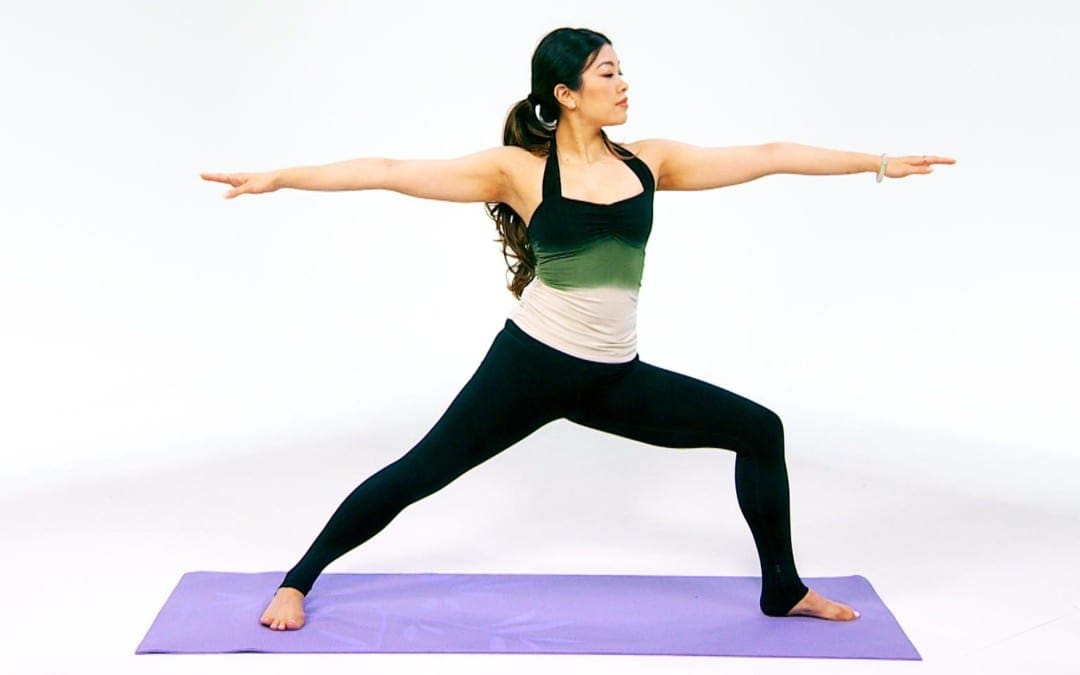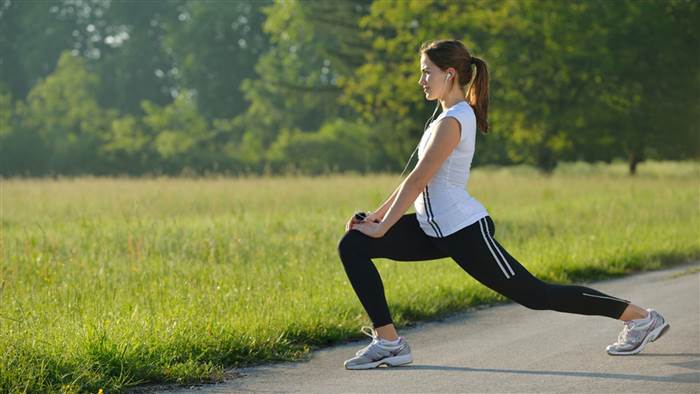Fitness
Back and Spinal Fitness at PUSH as Rx leads the field with a laser focus on supporting our youth sports programs. The PUSH-as-Rx System is a sport-specific athletic program designed by a strength-agility coach and physiology doctor with a combined 40 years of experience working with extreme athletes.
The program is the multidisciplinary study of reactive agility, body mechanics, and extreme motion dynamics at its core. A clear quantitative picture of body dynamics emerges through continuous and detailed assessments of the athletes in motion and under directly supervised stress loads.
Exposure to the biomechanical vulnerabilities is presented to our team. Immediately, we adjust our methods for our athletes to optimize performance. This highly adaptive system with continual dynamic adjustments has helped many of our athletes return faster, stronger, and ready post injury while safely minimizing recovery times.
Results demonstrate clear improved agility, speed, decreased reaction time with greatly improved postural-torque mechanics. PUSH-as-Rx offers specialized extreme performance enhancements to our athletes no matter the age.

by Dr Alex Jimenez DC, APRN, FNP-BC, CFMP, IFMCP | Fitness, Health, Wellness
The perfect pair
When walking you need your shoes to handle that repetitive heel-to-toe rolling motion. After all, “a 150-pound woman’s body encounters between 900,000 and 1,350,00 pounds of impact over a three-mile walk,” says Paul Langer, DPM, author of Great Feet for Life.
So make sure your kicks are comfy and supportive—a poor fit can lead to injury. And choose ones that are secure across the instep and in the heel, but roomy enough to wiggle your toes. Here, shoes that will protect your feet whether you’re fitness walking or simply commuting.
Watch the video: How to Burn More Fat When Walking for Exercise

by Dr Alex Jimenez DC, APRN, FNP-BC, CFMP, IFMCP | Fitness, Health, Wellness
This article originally appeared on Time.com.
Running is a simple and efficient way to exercise: all you need is a pair of shoes. It’s been shown to lower a person’s risk for heart disease and cancer, possibly by regulating weight and blood pressure. Now a recent study, published in the journal Progress in Cardiovascular Disease last month, reports that people who run tend to live about three years longer than those who don’t.
The researchers, who have studied the benefits of running in the past, decided to look at available research and investigate whether other forms of exercise like walking and biking provide the same benefits, or if runners have a special advantage.
The study’s authors found that while other types of exercise like walking and cycling were linked to a longer lifespan, it wasn’t to the same degree as running. The researchers calculated that a one-hour run may translate to an additional seven hours added to a person’s life. The benefits capped out at about three years, and the researchers found that the improvements in life expectancy leveled out at about four hours of running per week. More running wasn’t found to be significantly worse for a person, but the researchers say there are no further apparent longevity benefits.
RELATED: 7 Surprising Facts About Running
However, the researchers only found an associational relationship between running and longevity. Their data showed that people who run tend to live longer lives, but not that running specifically increases a person’s lifespan. Runners tend to have other healthy lifestyle behaviors like maintaining a healthy weight, not smoking and only drinking low-to-moderate amounts of alcohol, the authors note. Still, the findings suggest running is an especially effective form of exercise.
RELATED: 7 Running Injuries and How to Avoid Them
The study also found that runners who also do other types of physical activity have the same lower risk of early death, though combining running with other exercise is “the best choice,” the researchers write. (Federal guidelines recommend both aerobic exercise, like running, and strength training for optimal health.) They also acknowledge that it’s not yet clear how much running is safe, or if a person can run too much.
“Running may have the most public health benefits, but is not the best exercise for everyone since orthopedic or other medical conditions can restrict its use by many individuals,” the authors concluded.

by Dr Alex Jimenez DC, APRN, FNP-BC, CFMP, IFMCP | Diets, Fitness
You may be doing your body good by taking that morning run or working up a sweat at the gym. But when you also work up a thirst and take a swig from your trusty refillable water bottle you may actually taking a swig of harmful germs.
New research shows that an incredible amount of bacteria — including E. Coli and salmonella — may be lurking in and on your water bottle.
Laboratory tests by Treadmill Reviews, a Minneapolis-based firm, analyzed 12 water bottles used by athletes and not washed for a week and found they had such high levels of bacteria that drinking from them would be like “licking a toilet seat.”
They tested four types of reusable bottles: A slide-top, screw-top, squeeze-top and straw-top. The researchers evaluated the amount of contamination in terms of “colony forming units,” or CFUs, of bacteria per square centimeter. Here are their findings:
- The bottles contained an average of 300,000 CFU of bacteria. That’s six times as much bacteria as you’d find on your pet’s food bowl. And much of the bacteria was the kind that makes you sick.
- The slide-top bottles contained the highest amount of bacteria: A whopping 933,340 CFU. They also had the most gram-positive germs which have been linked to skin infections, pneumonia and blood poisoning.
- Squeeze-top bottles were next with 162,000 CFU followed by screw-top vessels with 160,000 CFU. These also housed 99 percent of the harmful bacteria.
- Straw-top bottles were the clear winners with only 25 CFU. But that’s only 2 CFU less than the average home toilet seat. It is thought that these are safer because water drips down to the bottom of the straw rather than hang out at the top attracting moisture-loving germs.
“Based on our test results, we suggest opting for a straw-top bottle, both for the prevalence of bacteria and the lack of harmful germs,” says the fitness Website. They suggested that stainless steel water bottles are a better choice than plastic which may also contain Bisphenol A, otherwise known as BPA, a chemical that can lead to cancer, diabetes, and other illnesses.
But by far the best option, says the website Aquasana.com, is to use glass water bottles and run them through the dishwasher or wash thoroughly by hand after every use.
By comparison, other household germy hot spots include:
- Toothbrush holder, 331,848 CFU.
- Pet bowl, 47,383 CFU.
- Kitchen sink, 3,191 CFI.
- Cutting board, 6.8 CFU.
“Harmful bacteria and viruses lurk in moist locations such as the kitchen and bathroom and can be easily transported into your mouth by using an old toothbrush, sponge or other common household item,” Dr. Donald Marks tells Newsmax Health.
The New Jersey-based infectious disease expert, who also holds a Ph.D. in microbiology and immunology, makes the following recommendations to avoid home contamination:
Sponges and wash clothes. You may think you are cleaning cups and saucers with these items but they can contain thousands of bacteria per square inch so you’re just spreading germs around. Put wash clothes in the washing machine and run the sponges through the dishwasher. Better still, replace sponges every two weeks,
Kitchen drain. Your kitchen drain contains more germs than your bathroom toilet. With the hot water running, pour a little baking soda down the drain daily.
Kitchen towels. A recent study showed that 7 percent of kitchen towels were contaminated with MRSA (methicillin-resistant Staphylococcus aureus). Wash them in hot water twice weekly.
Refrigerator water filters. These filters collect bacteria and mold over time. The rule of thumb is to change them twice annually. If you have a large family of water drinkers, every three months is a better time frame.
Toothbrush. Your toothbrush is a magnet for bacteria that can come from toilet spray, splashes from the sink when you wash your hands, or from your own mouth. Replace it every three or four months and never share a toothbrush. You may consider soaking it in an antibacterial solution after every use.

by Dr Alex Jimenez DC, APRN, FNP-BC, CFMP, IFMCP | Fitness, Health, Wellness
This article originally appeared on Time.com.�
People who run marathons go through intense training before enduring the physically grueling 26.2-mile event�so it�s little wonder their health can sometimes suffer. But on marathon days, the event can also create unexpected problems for non-runners who need urgent medical care.
In a new report published in the New England Journal of Medicine, researchers found that road closures and traffic disruptions on marathon days can lead to delays in emergency care that can cost people their lives.
Dr. Anupam Jena, from the department of health care policy at Harvard Medical School and Massachusetts General Hospital, and his colleagues analyzed data from Medicare claims for hospitalizations for heart attack in 11 cities that hosted marathons from 2002 to 2012. They compared the death rates of these people on marathon days to those a few weeks before and after the marathon. People who had heart attacks on marathon days had a 13% higher rate of death than people on other days. Ambulances also took 4.4 minutes longer on days marathons were run.
�We were expecting to see there would potentially be delays in care,� says Jena, �but not necessarily increases in mortality. It�s difficult to influence mortality; you would have to have substantive delays in care.�
RELATED:�Is Running Good or Bad for Your Knees?
Road closures, detours and other changes in traffic patterns were dramatic enough to cause delays that could affect a person�s chance of surviving a heart attack, the team found. Over a year, marathons could contribute to an additional four deaths, based on the 30-day mortality rate calculations. The effect remained strong even after they adjusted for the possibility that more people visit a city hosting a marathon, and therefore statistically there may simply be more heart events. The researchers also made sure that hospitals and emergency services were not short-staffed or overburdened with the added volume of requests. All of these factors were similar on marathon and non-marathon days.
The disruption in traffic during a marathon is the primary reason for delays in care, Jena says. That�s good news because it�s a fixable problem; marathon planners can ensure that access to hospitals is not congested and affected by the race route.
The other lesson from the study is useful for people in need of medical attention. A quarter of the people in the study chose not to call an ambulance and instead drove themselves to the hospital�perhaps because they thought that emergency services were tied up with the marathon�and these people seemed to account for most of the higher mortality on marathon days, says Jena. That may be because they were forced to take more circuitous routes to reach the hospital, he says. �They don�t experience the four-minute delays of ambulance transport; they�re experiencing much larger delays because they are trying to drive themselves.�
Even with the delays, ambulances were the best form of transportation to the emergency room. �Anybody thinking of driving to the hospital themselves on the day of a major public event should pick up the phone and call 911,� Jena says.

by Dr Alex Jimenez DC, APRN, FNP-BC, CFMP, IFMCP | Fitness, Health, Wellness
Yoga can be an effective way to prevent and ease aches and pains—but it can also cause them if you’re not careful. The key is proper alignment. Go from “ow” to “om” in seconds by making simple alignment tweaks to common poses. In this video, Yoga With Kirby founder Kirby Koo shows you quick fixes to take pressure off your knees, wrists, and neck. These basic principles can be applied throughout your practice to help prevent pain before it starts.
Warrior II
Once you’re set up in Warrior II, pay attention to the position of your front knee. Is it sticking out beyond your ankle? Is it collapsing inward? Pull your knee back into place, so it’s stacked directly above your ankle, and tracking in the same direction as the toes of your front foot. This protects the ligaments in your knee and prevents knee pain.
Related Content: Try This 15-Minute Yoga Flow for Stress Relief
Plank
Plank is a great core stabilizing exercise if you have proper alignment. But if your belly and hips sag in this pose, then your wrists are probably taking on the brunt of your body weight. In plank, engage your core muscles by imagining a zipper running up from your pubic bone to your belly button. This should help raise your hips so your body forms a continuous line from the top of your head to your heels, a more stable position that will help distribute your body weight more evenly and ease the pressure in the wrists.
Cow Pose
Cow pose can feel super satisfying, but it’s easy to go overboard and strain your neck while you’re enjoying the gentle backbend. When you’re in cow pose, it’s important to remember not to tip your head too far back, shortening the back of the neck. You’ll get a lot more out of the pose (and avoid neck strain) if you imagine your neck as an extension of the gentle curve of the spine. Lift your gaze only as far as you can without compromising the curve in your spine and the length in the back of your neck. The same concept can apply for Upward-Facing Dog, too!

by Dr Alex Jimenez DC, APRN, FNP-BC, CFMP, IFMCP | Exercise, Fitness, Health, Wellness
Maybe this will be the news that finally jolts you off the couch and into an exercise program. A new study suggests that being physically active increases the chances of survival after a heart attack.
Researchers compared exercise levels among 1,664 heart attack patients in Denmark, including 425 who died immediately. Those who had been physically active were less likely to die, and the risk of death decreased as exercise levels rose. Patients who had light or moderate/high physical activity levels were 32 percent and 47 percent less likely to die from their heart attack, respectively, than the sedentary patients.
The study was published April 12 in the European Journal of Preventive Cardiology.
“We know that exercise protects people against having a heart attack,” said study co-author Eva Prescott, a professor of cardiovascular prevention and rehabilitation at the University of Copenhagen. “Animal studies suggest that myocardial infarctions [heart attacks] are smaller and less likely to be fatal in animals that exercise. We wanted to see if exercise was linked with less serious myocardial infarctions in people,” she added in a journal news release. “One possible explanation is that people who exercise may develop collateral blood vessels in the heart which ensure the heart continues to get enough blood after a blockage. Exercise may also increase levels of chemical substances that improve blood flow and reduce injury to the heart from a heart attack,” Prescott said.
She added this caveat: “This was an observational study so we cannot conclude that the associations are causal [cause and effect]. The results need to be confirmed before we can make strong recommendations.
“But,” Prescott added, “I think it’s safe to say that we already knew exercise was good for health and this might indicate that continuing to exercise even after developing atherosclerosis [hardening of the arteries] may reduce the seriousness of a heart attack if it does occur.”
The scope of our information is limited to chiropractic and spinal injuries and conditions. To discuss options on the subject matter, please feel free to ask Dr. Jimenez or contact us at 915-850-0900 .
Chiropractic care is an well-known, alternative treatment option utilized to prevent, diagnose and treat a variety of injuries and conditions associated with the spine, primarily subluxations or spinal misalignments. Chiropractic focuses on restoring and maintaining the overall health and wellness of the musculoskeletal and nervous systems. Through the use of spinal adjustments and manual manipulations, a chiropractor, or doctor of chiropractic, can carefully re-align the spine, improving a patient�s strength, mobility and flexibility.

by Dr Alex Jimenez DC, APRN, FNP-BC, CFMP, IFMCP | Diets, Fitness
Local bans on artery-clogging trans fats in restaurant foods led to fewer heart attacks and strokes in several New York counties, a new study suggests.
The study hints at the potential for widespread health benefits from an upcoming nationwide ban, the authors and other experts say. The U.S. Food and Drug Administration in 2015 gave the food industry until next year to eliminate artificial trans fats from American products.
New York City enacted a restaurant ban on the fats in 2007 and several counties in the state did the same. Hospital admissions for heart attacks and strokes in those areas declined 6 percent starting three years after the bans, compared with counties without bans. The results translate to 43 fewer heart attacks and strokes per 100,000 people, said lead author Dr. Eric Brandt, a Yale University cardiology fellow.
His study was published Wednesday in JAMA Cardiology.
Trans fats, also called partially hydrogenated oils, enhance food texture and structure. They were once commonly used to make restaurant fried chicken, French fries, doughnuts and other foods and found in grocery items including cookies, crackers and margarine.
These fats can boost blood levels of unhealthy cholesterol, increasing risks for heart problems. The FDA in 2006 required them to be listed on food labels and the food industry has been switching to healthier oils.
The researchers examined hospital admissions data from 2002 to 2013 in 11 New York counties that adopted bans and in 25 counties that did not. Admissions for heart attacks and strokes declined in all counties, going from more than 800 to less than 700 per 100,000 people, but the drop was steeper in counties that enacted bans.
Alice Lichtenstein, a heart and nutrition specialist at Tufts University’s Boston campus, said the results are encouraging but that other changes could have contributed, such as smoking bans and mandatory calories on menus.
Dr. Mark Creager, former American Heart Association president, said the results echo previous studies “and are consistent with the thinking of most scientists” on potential benefits of these bans.
“Policies such as these when adapted on a nationwide level will be good for our entire population,” said Creager, director of Dartmouth-Hitchcock Medical Center’s heart center in Lebanon, New Hampshire.

















